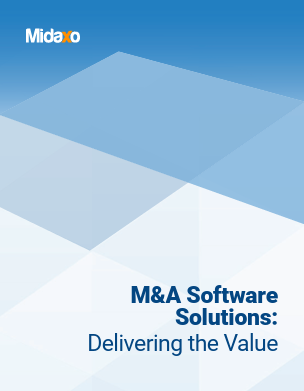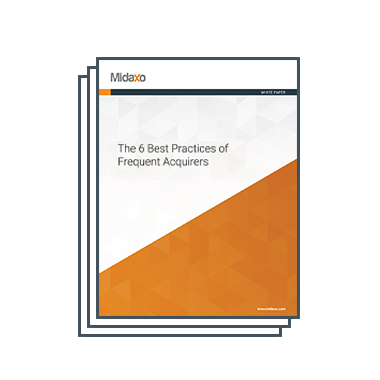Last month, Galina Wolinetz, MD Integrations & Separations at Virtas Partners shared her insights on the acquisition and integration of smaller companies into larger ones using examples from her personal experience. During the live Q&A — Preserving the Spark: Realizing Value When Acquiring Smaller Companies — Galina covered a broad range of considerations, challenges and watchouts that are unique to acquiring small, founder-led companies.
We were unable to answer every question from the engaged audience of M&A professionals during the session; however, below you will find these additional queries answered and organized into themes which broadly reflect the common challenges and unique circumstances of these types of deals. This is the first in a two-part blog series. Read Part II here.
Small Company Dynamics
Q: What are some benefits for a smaller company to join a bigger company?
At a high level, the 2 biggest benefits of joining a bigger company are scale and resources. Smaller companies often struggle with limited resources and joining a bigger company gives them access to greater capital, advanced technology, and a larger talent pool. Additionally, smaller companies can scale their business through established sales channels, brand recognition and market reach.
At the employee level, there are some intangible benefits including better career opportunities, better benefits, ability to support local communities through programs like Habitat for Humanity or United Way as people think about “what’s in it for me”. Sharing these opportunities upfront is usually a good retention mechanism for employees when a small company is being acquired by a bigger company.
And why would a big company buy small? Acquiring smaller companies can be an effective growth strategy for large corporations. While challenges exist — including those related to resource allocation and cultural integration — overcoming these obstacles can lead to significant benefits. By recognizing the potential value and diligently managing the integration process, big companies can harness the innovation, agility, and market opportunities that smaller companies offer, ultimately fueling the acquirer’s long-term success.
Q: How can you sell yourself as the right buyer?
When buying a smaller company, it is important to focus on a few key areas as a buyer. Firstly, you need to address concerns about autonomy and assure the target company that you will preserve their unique qualities that make them successful. Secondly, cultural alignment is a huge aspect of such deals. Buyers need to highlight the alignment of values and culture across innovation, employee development and a supportive work environment. Finally, buyers need to show that they are committed to the success of the transition by offering the seller a seamless transition and integration process that is structured and not disruptive.
Demystifying Culture
Q: What are some tangible examples to integrate culture across all levels of the organization?
The best way to integrate culture is to have an intentional and well laid out plan in the early stages of the deal lifecycle. Having clear core values that represent the desired culture and having leaders embody those values is the starting point of cultural integration. Some tangible examples to integrate culture include:
- Establishing cultural champions who serve as role models, promoting and reinforcing culture through their actions, behaviors, and communications.
- Implementing training programs to include workshops or seminars to provide employees with a shared understanding of the desired culture and how it translates into day-to-day actions.
- Creating cross-functional collaboration opportunities and initiatives to foster a sense of inclusivity and teamwork.
- Fostering open communication through feedback sessions, suggestion boxes or digital platforms for collaboration.
- Celebrating successes and milestones to recognize individuals or teams who embody the desired cultural attributes and contribute to the organization’s success.
Q: Are there ways to bring culture analysis in sooner than later in the deal?
In the initial deal phase, it’s important to define the key cultural dimensions that are important to the acquiring company. This could include communication style, decision making processes, risk tolerance or innovation orientation. This framework can be used to assess and compare the culture of the target company with the acquiring company. The acquiring company can also conduct interviews or focus groups with key leaders in the target company.
Q: Do you endorse the role of a Culture Tsar? Who handles the top-level cultural messaging – acquirer’s CHRO, acquirer’s CEO or someone else?
A Culture Tsar can play a crucial role in ensuring the alignment of cultures and managing cultural change. Culture is often an overlooked aspect of a deal, and it is well known that 70-90% of deals fail, many due to culture clashes. Thus, having a Culture Tsar can absolutely help put the spotlight on this important aspect of M&A integration.
When it comes to top level cultural messaging, it is typically a shared responsibility between the acquirer’s senior leadership, including the CHRO, CRO and other key executives. The CEO often sets the tone and direction, while the CHRO provides expertise and support in crafting and cascading the messaging throughout the organization.
Further Reading
For more on integration of smaller companies including acquihires and roll-ups, check out Midaxo’s piece on the challenges and benefits of acquiring smaller companies and read How to Preserve Value in Small Acquisitions: Part II. You can learn more about Galina Wolinetz and Virtas Partners here.





